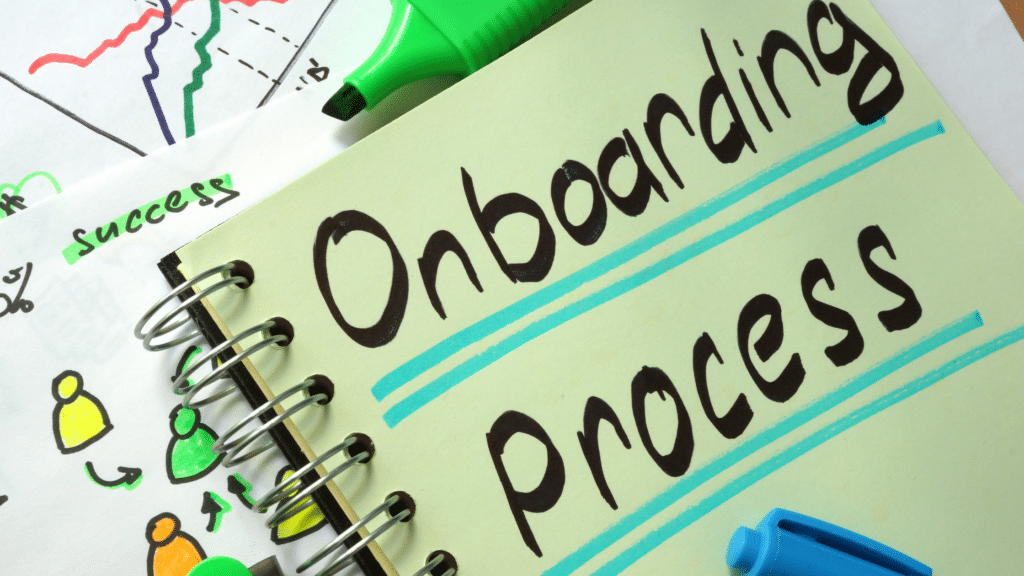Transitioning from manual to paperless onboarding marks a significant evolutionary step for any organization aiming to streamline its HR processes and bolster operational efficiency. This transformative change transcends the mere digitization of paperwork; it represents a fundamental shift in the approach to managing new hires. By adopting paperless systems, companies can significantly expedite the onboarding process, reducing the time and resources traditionally spent on manual data entry, document filing, and record-keeping. This efficiency is not just about saving time—it’s about reallocating valuable HR efforts towards more strategic, impactful activities that contribute to employee and organizational development.
Moreover, the shift to paperless onboarding lays down a robust foundation for long-term organizational benefits. It introduces scalability and flexibility that manual processes cannot match. As a business grows and its workforce expands, the paperless system seamlessly adapts, capable of handling an increasing volume of onboarding tasks without a proportional increase in workload or resources. This adaptability is crucial in today’s fast-paced business environment, where the ability to onboard and integrate new talent quickly can provide a significant competitive edge. Additionally, the data collected through digital onboarding provides invaluable insights into workforce trends and employee engagement, fostering informed decision-making and continuous improvement in HR strategies.
Here are 11 best practices to ensure a smooth and effective transition to paperless onboarding.
1. Conduct a Thorough Process Audit
Before implementing a paperless system, conduct a detailed audit of your existing onboarding process. Identify bottlenecks, unnecessary steps, and areas where paperwork causes delays or issues. Understanding these nuances will help tailor a paperless system that best fits your organizational needs.
2. Define Specific Goals
Set clear, measurable goals for your paperless onboarding system. Whether it’s reducing time-to-productivity for new hires, enhancing compliance, or improving the onboarding experience, having specific targets will guide your strategy and help measure success.
3. Choose the Right Technology Platform
Selecting a platform that is intuitive, scalable, and integrates well with your existing HR systems is crucial. Features like electronic signatures, customizable forms, and automated workflows should align with your onboarding goals.
4. Customize Onboarding Content
Tailor your onboarding content to reflect your company culture and the specific roles of new hires. Personalization can include welcome videos, interactive modules, and role-specific training materials, making the process more engaging for new employees.
5. Train Your Team
Ensure that your HR team is adequately trained on the new system. They should understand how to navigate the platform, troubleshoot common issues, and assist new hires throughout the onboarding process.
6. Pilot the System
Before a full-scale implementation, start with a pilot program. This approach allows you to gather insights, identify potential issues, and make necessary adjustments in a controlled environment.
7. Gather and Incorporate Feedback
Collect feedback from both HR staff and new hires who go through the paperless onboarding process. Use this information to continuously refine and improve your system.
8. Ensure Compliance and Security
With any digital system, compliance with data protection laws and ensuring the security of personal information is paramount. Regularly update your system to stay compliant with employment laws and invest in robust security measures to protect sensitive data.
9. Communicate the Change
Effective communication is key to successful implementation. Inform all stakeholders about the shift to a paperless system, emphasizing its benefits and how it will improve the onboarding experience.
10. Monitor and Evaluate the Process
Continuously monitor the effectiveness of your paperless onboarding system. Evaluate its impact based on your predefined goals and make adjustments as needed to ensure it meets the evolving needs of your organization.
11. Stay Updated with Technological Advancements
The digital world is ever-evolving. Stay updated with the latest trends and advancements in paperless onboarding technologies to ensure your system remains efficient, user-friendly, and ahead of the curve.
Short-Term and Long-Term Benefits
Short-Term Benefits:
- Increased Efficiency: Immediate reduction in time spent on paperwork and data entry.
- Improved Accuracy: Less likelihood of errors that come with manual data processing.
- Enhanced New Hire Experience: Streamlined and engaging onboarding process.
Long-Term Benefits:
- Scalability: Easier to accommodate organizational growth and changes.
- Cost Savings: Reduced costs associated with paper, printing, and storage.
- Sustainability: Contribution to environmental goals by reducing paper usage.
- Data Insights: Better data collection and analysis for continuous improvement.
Implementing a paperless onboarding system is a progressive step towards modernizing HR practices. In the short term, it brings efficiency and a better onboarding experience. In the long term, it supports scalability, cost savings, and a commitment to sustainability, all of which are crucial for staying competitive in today’s business environment. By following these best practices, organizations can ensure a seamless transition to paperless onboarding, reaping benefits that resonate across all levels of the company.


